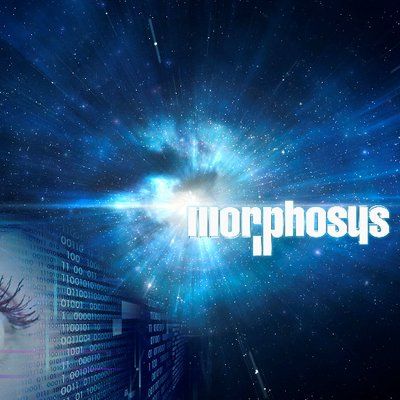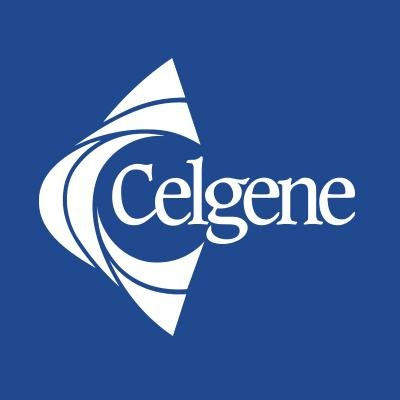预约演示
更新于:2025-12-08

MorphoSys AG
更新于:2025-12-08
概览
标签
免疫系统疾病
肿瘤
血液及淋巴系统疾病
单克隆抗体
降解型分子胶
小分子化药
疾病领域得分
一眼洞穿机构专注的疾病领域
暂无数据
技术平台
公司药物应用最多的技术
暂无数据
靶点
公司最常开发的靶点
暂无数据
| 排名前五的药物类型 | 数量 |
|---|---|
| 小分子化药 | 13 |
| 单克隆抗体 | 7 |
| 降解型分子胶 | 1 |
| 双特异性T细胞结合器 | 1 |
关联
22
项与 MorphoSys AG 相关的药物靶点 |
作用机制 CD19抑制剂 [+2] |
在研机构 |
原研机构 |
非在研适应症 |
最高研发阶段批准上市 |
首次获批国家/地区 美国 |
首次获批日期2020-07-31 |
作用机制 JAK1抑制剂 [+1] |
原研机构 |
最高研发阶段批准上市 |
首次获批国家/地区 美国 |
首次获批日期2011-11-16 |
作用机制 CK1α抑制剂 [+3] |
在研机构 |
原研机构 |
非在研适应症 |
最高研发阶段批准上市 |
首次获批国家/地区 美国 |
首次获批日期2005-12-27 |
30
项与 MorphoSys AG 相关的临床试验NCT06029309
A Phase 1/2 Study of Zanubrutinib and Tafasitamab in Mantle Cell Lymphoma
The main purpose of this study to find the ideal dose for the combination treatment of Zanubrutinib and Tafasitamab in patients with mantle cell lymphoma. Another purpose is to assess how well the combination treatment works in patients with the study disease.
开始日期2024-05-03 |
申办/合作机构  University of Miami University of Miami [+3] |
NCT05626322
A PHASE 1b/2 STUDY OF PF-07901801, A CD47 BLOCKING AGENT, WITH TAFASITAMAB AND LENALIDOMIDE FOR PARTICIPANTS WITH RELAPSED/REFRACTORY DIFFUSE LARGE B CELL LYMPHOMA NOT ELIGIBLE FOR STEM CELL TRANSPLANTATION
The purpose of this study is to learn about the effects of three study medicines [maplirpacept (PF-07901801), tafasitamab, and lenalidomide] when given together for the treatment of diffuse large B-cell lymphoma (DLBCL) that:
* is relapsed (has returned after last treatment) or
* is refractory (has not responded to last treatment)
DLBCL is a type of non-Hodgkin lymphoma (NHL). NHL is a cancer of the lymphatic system. It develops when the body makes abnormal lymphocytes. These lymphocytes are a type of white blood cell that normally help to fight infections.
This study is seeking participants who are unable or unwilling to undergo an autologous stem cell transplantation (when doctors put healthy blood cells back into your body) or CAR-T immune cell therapy.
Everyone in this study will receive three medicines: maplirpacept (PF-07901801), tafasitamab and lenalidomide. Participants will receive maplirpacept (PF-07901801) and tafasitamab at the study clinic by intravenous (IV) infusion (given directly into a vein) and lenalidomide will be taken by mouth at home. Study interventions will be administered in 28-day cycles. Maplirpacept (PF-07901801) will be given weekly for the first three cycles and then every two weeks. Tafasitamab will administered on Days 1, 4, 8, 15 and 22 in cycle 1, weekly in cycles 2 and 3 and then every 2 weeks in cycle 4 and beyond. Lenalidomide will be taken every day for Days 1 to 21 of each 28-day cycle for the first 12 cycles.
Participants can continue to take maplirpacept (PF-07901801) and tafasitamab until their lymphoma is no longer responding. Lenalidomide is discontinued after 12 cycles.
Maplirpacept (PF-07901801) will be given at different doses to different participants. Everyone taking part will receive approved doses of tafasitamab and lenalidomide. We will compare the experiences of people receiving different doses of PF-07901801. This will help us to determine what dose is safe and effective when combined with the other 2 study medicines.
* is relapsed (has returned after last treatment) or
* is refractory (has not responded to last treatment)
DLBCL is a type of non-Hodgkin lymphoma (NHL). NHL is a cancer of the lymphatic system. It develops when the body makes abnormal lymphocytes. These lymphocytes are a type of white blood cell that normally help to fight infections.
This study is seeking participants who are unable or unwilling to undergo an autologous stem cell transplantation (when doctors put healthy blood cells back into your body) or CAR-T immune cell therapy.
Everyone in this study will receive three medicines: maplirpacept (PF-07901801), tafasitamab and lenalidomide. Participants will receive maplirpacept (PF-07901801) and tafasitamab at the study clinic by intravenous (IV) infusion (given directly into a vein) and lenalidomide will be taken by mouth at home. Study interventions will be administered in 28-day cycles. Maplirpacept (PF-07901801) will be given weekly for the first three cycles and then every two weeks. Tafasitamab will administered on Days 1, 4, 8, 15 and 22 in cycle 1, weekly in cycles 2 and 3 and then every 2 weeks in cycle 4 and beyond. Lenalidomide will be taken every day for Days 1 to 21 of each 28-day cycle for the first 12 cycles.
Participants can continue to take maplirpacept (PF-07901801) and tafasitamab until their lymphoma is no longer responding. Lenalidomide is discontinued after 12 cycles.
Maplirpacept (PF-07901801) will be given at different doses to different participants. Everyone taking part will receive approved doses of tafasitamab and lenalidomide. We will compare the experiences of people receiving different doses of PF-07901801. This will help us to determine what dose is safe and effective when combined with the other 2 study medicines.
开始日期2023-08-04 |
申办/合作机构  Pfizer Inc. Pfizer Inc. [+2] |
ISRCTN10750305
An Open-Label, Single-Dose, Single-Period Study to Assess the Mass Balance Recovery, Metabolite Profile and Metabolite Identification of [14C]-pelabresib in Healthy Male Subjects
开始日期2022-11-22 |
100 项与 MorphoSys AG 相关的临床结果
登录后查看更多信息
0 项与 MorphoSys AG 相关的专利(医药)
登录后查看更多信息
121
项与 MorphoSys AG 相关的文献(医药)2025-05-01·NATURE MEDICINE
Pelabresib plus ruxolitinib for JAK inhibitor-naive myelofibrosis: a randomized phase 3 trial
Article
作者: Mesa, Ruben ; Chraniuk, Dominik ; Harrison, Claire N ; Boxhammer, Rainer ; Gerds, Aaron T ; Lavie, David ; Lee, Sung-Eun ; Li, Qing ; Talpaz, Moshe ; Oh, Stephen T ; Mascarenhas, John ; Lucchesi, Alessandro ; Grosicki, Sebastian ; Álvarez-Larrán, Alberto ; Patriarca, Andrea ; Brown, Barbara ; Scandura, Joseph M ; Vannucchi, Alessandro M ; Abruzzese, Elisabetta ; Harris, Morgan ; Bose, Prithviraj ; Jegg, Anna-Maria ; Kays, Sarah-Katharina ; Kuykendall, Andrew T ; Gupta, Vikas ; Palandri, Francesca ; Kiladjian, Jean-Jacques ; Rampal, Raajit K
Janus kinase (JAK) inhibitors provide limited depth and durability of response in myelofibrosis. We evaluated pelabresib-a bromodomain and extraterminal domain (BET) inhibitor-plus ruxolitinib (a JAK inhibitor) compared with placebo plus ruxolitinib as first-line therapy. In this phase 3 study (MANIFEST-2), JAK inhibitor-naive patients with myelofibrosis were randomized 1:1 to pelabresib 125 mg once daily (QD; 50-175 mg QD permitted) for 14 days followed by a 7-day break (21-day cycle), or to placebo in combination with ruxolitinib 10 or 15 mg twice daily (BID; 5 mg QD-25 mg BID permitted). Primary endpoint was reduction in spleen volume of ≥35% from baseline at week 24. Key secondary endpoints were absolute change in total symptom score (TSS) and TSS50 response (≥50% reduction in TSS from baseline at week 24). The primary endpoint was met in 65.9% of patients randomized to pelabresib-ruxolitinib (n = 214) versus 35.2% to placebo-ruxolitinib (n = 216) (difference, 30.4%; 95% confidence interval (CI), 21.6, 39.3; P < 0.001). Absolute change in TSS was -15.99 versus -14.05 (difference, -1.94; 95% CI, -3.92, 0.04; P = 0.0545) and TSS50 was achieved in 52.3% versus 46.3% (difference, 6.0%; 95 CI, -3.5, 15.5) with pelabresib-ruxolitinib versus placebo-ruxolitinib. Exploratory analyses of proinflammatory cytokine amounts and bone marrow morphology showed greater improvement with the combination. Thrombocytopenia and anemia were the most common treatment-emergent adverse events, occurring in 52.8% (13.2% grade ≥3) versus 37.4% (6.1% grade ≥3) and 44.8% (23.1% grade ≥3) versus 55.1% (36.5% grade ≥3), respectively. Pelabresib in combination with ruxolitinib is well tolerated, improves signs of underlying myelofibrosis pathobiology and provides substantial clinical benefit over standard-of-care JAK inhibitor monotherapy. ClinicalTrials.gov identifier: NCT04603495 .
2024-08-01·CANCER RESEARCH
Comprehensive Target Engagement by the EZH2 Inhibitor Tulmimetostat Allows for Targeting of ARID1A Mutant Cancers
Article
作者: Adams, Elizabeth J. ; Khanna, Avinash ; Sun, Kaiming ; Côté, Alexandre ; Meyer, Rosana ; Arora, Shilpi ; Taimi, Mohammed ; Truong, Jennifer ; Cui, Jike ; Stuckey, Jacob I. ; Lakhani, Nehal J. ; Cantone, Nico ; Cummings, Richard T. ; Levell, Julian ; Devitt, Michael ; Zhao, Feng ; Mertz, Jennifer A. ; Chen, Zehua ; Wang, Jing ; Duska, Linda ; Trojer, Patrick ; Keller, Patricia J. ; Gehling, Victor ; Yu, Ziyang ; Rippley, Ronda ; Wu, Rentian ; Rasco, Drew ; Gutierrez, Martin
Abstract:
Recurrent somatic mutations in the BRG1/BRM-associated factor (BAF) chromatin remodeling complex subunit ARID1A occur frequently in advanced urothelial, endometrial, and ovarian clear cell carcinomas, creating an alternative chromatin state that may be exploited therapeutically. The histone methyltransferase EZH2 has been previously identified as targetable vulnerability in the context of ARID1A mutations. In this study, we describe the discovery of tulmimetostat, an orally available, clinical stage EZH2 inhibitor, and it elucidates the aspects of its application potential in ARID1A mutant tumors. Tulmimetostat administration achieved efficacy in multiple ARID1A mutant bladder, ovarian, and endometrial tumor models and improved cisplatin response in chemotherapy-resistant models. Consistent with its comprehensive and durable level of target coverage, tulmimetostat demonstrated greater efficacy than other PRC2-targeted inhibitors at comparable or lower exposures in a bladder cancer xenograft mouse model. Tulmimetostat mediated extensive changes in gene expression, in addition to a profound reduction in global H3K27me3 levels in tumors. Phase I clinical pharmacokinetic and pharmacodynamic data indicated that tulmimetostat exhibits durable exposure and profound target engagement. Importantly, a tulmimetostat controlled gene expression signature identified in whole blood from a cohort of 32 patients with cancer correlated with tulmimetostat exposure, representing a pharmacodynamic marker for the assessment of target coverage for PRC2-targeted agents in the clinic. Collectively, these data suggest that tulmimetostat has the potential to achieve clinical benefit in solid tumors as a monotherapy but also in combination with chemotherapeutic agents, and may be beneficial in various indications with recurrent ARID1A mutations.Significance: The EZH2 inhibitor tulmimetostat achieves comprehensive target inhibition in ARID1A mutant solid tumor models and cancer patients that can be assessed with a pharmacodynamic gene signature in peripheral blood.
2024-03-20·Leukemia & lymphoma
Results from phase 1 of the MANIFEST clinical trial to evaluate the safety and tolerability of pelabresib in patients with myeloid malignancies
Article
作者: Fathi, Amir T. ; Colak, Gozde ; Fusco, Andrea ; Harb, Wael A. ; Mangan, James K. ; Stein, Eytan M.
Pelabresib (CPI-0610), a BET protein inhibitor, is in clinical development for hematologic malignancies, given its ability to target NF-κB gene expression. The MANIFEST phase 1 study assessed pelabresib in patients with acute leukemia, high-risk myelodysplastic (MDS) syndrome, or MDS/myeloproliferative neoplasms (MDS/MPNs) (NCT02158858). Forty-four patients received pelabresib orally once daily (QD) at various doses (24-400 mg capsule or 225-275 mg tablet) on cycles of 14 d on and 7 d off. The most frequent drug-related adverse events were nausea, decreased appetite, and fatigue. The maximum tolerated dose (MTD) was 225 mg tablet QD. One patient with chronic myelomonocytic leukemia (CMML) showed partial remission. In total, 25.8% of acute myeloid leukemia (AML) patients and 38.5% of high-risk MDS patients had stable disease. One AML patient and one CMML patient showed peripheral hematologic response. The favorable safety profile supports the ongoing pivotal study of pelabresib in patients with myelofibrosis using the recommended phase 2 dose of 125 mg tablet QD.CLINICAL TRIAL REGISTRATION: NCT02158858.
615
项与 MorphoSys AG 相关的新闻(医药)2025-12-01
·百度百家
曾经被认为是不治之症的某些血液肿瘤,因为CD19靶点药物的出现而有了治愈的希望。这个神奇的靶点正在改写无数患者的生命轨迹。在医学研究领域,CD19作为一个重要的B细胞生物标志物,已经成为肿瘤免疫治疗中最成功的靶点之一。从最初的科学发现到如今的多种靶向药物上市,CD19靶向药物的发展历程见证了现代医学的进步。CD19是表达于B淋巴细胞及滤泡树突状细胞的跨膜蛋白,与B细胞活化、信号传导及生长调节密切相关。它在B细胞发育早期表达,并在成熟B细胞阶段持续表达,是B细胞最可靠的表面生物标志物之一。
01 CD19靶点的生物学特性与研究意义
CD19作为一种I型单次跨膜糖蛋白,位于16号染色体短臂上(16p11.2),编码556个氨基酸的I型跨膜糖蛋白,分子量为95kD。CD19与补体受体CD21、四跨膜蛋白CD81一起,是成熟B细胞表面上多分子复合物的主要信号传导成分。它在维持体液、抗原诱导的反应和耐受诱导之间的平衡中起着关键作用。CD19之所以成为理想的治疗靶点,是因为它在B细胞来源的血液系统肿瘤细胞上高表达,且其他谱系细胞基本不表达CD19,使其具有相对较高的特异性。这使得CD19成为针对B细胞来源肿瘤的理想治疗靶点。
02 CD19靶点药物的发展历程
CD19靶向药物的开发经历了从单克隆抗体到双特异性抗体,再到CAR-T细胞疗法的历程。2014年,贝林妥欧单抗(Blincyto)获批上市,这是首个CD19靶向药物,也是一种CD19/CD3双特异性抗体。它能够同时结合T细胞表面的CD3和B细胞表面的CD19,从而激活T细胞并引导其杀伤B细胞。2017年,诺华公司开发的第一个CD19 CAR-T细胞产品Kymriah在美国获批上市,用于治疗难治性或复发的B细胞前体急性淋巴细胞白血病(ALL)。同年,吉利德的CD19 CAR-T细胞产品Yescarta也获批用于治疗已接受过化疗的难治性或复发的B细胞淋巴瘤成人患者。2021年,复星凯特引进的Yescarta技术开发的阿基仑赛注射液正式获批,成为我国首个获批的CAR-T细胞疗法。药明巨诺申报的CD19-CAR-T疗法JWCAR029也随后获批上市。近年来,CD19单抗药物也取得了重要进展。MorphoSys公司的Tafasitamab为靶向CD19的人源化Fc结构域优化的单克隆抗体即将上市。Viela Bio公司的抗CD19单抗(Inebilizumab-cdon)已经获FDA批准上市,用于治疗成人视神经脊髓炎谱系疾病(NMOSD)。
03 CD19靶点药物的临床突破
CD19靶向药物在临床治疗中取得了显著成效。四川大学华西医院牛挺教授指出:“早期获得疾病控制对R/R DLBCL患者至关重要。坦昔妥单抗二线疗效显著,L-MIND研究显示二线总缓解率(ORR)高达67.5%,完全缓解(CR)率高达52.5%,中位无进展生存期(mPFS)长达23.5个月,使更多患者有机会获得深度缓解,早用早获益。”Smart-Stop研究显示,一线使用坦昔妥单抗联合方案CR率高达100%,预示其在更早线治疗中的巨大潜力。大多数DLBCL患者为老年人,老年患者因为身体状态差、存在合并症、难以耐受高强度的化疗方案等因素导致预后不佳。L-MIND研究显示坦昔妥单抗联合治疗方案安全性良好,不良事件可控。CD19靶向药物近年来最大的突破之一是其在自身免疫性疾病治疗中的应用。2022年9月,德国研究者报告应用靶向CD19 CAR-T疗法成功治疗了5名难治性系统性红斑狼疮患者。所有患者的疾病症状均有显著改善,并在长达17个月的随访中实现了无药缓解。2023年2月,该团队再次通过《柳叶刀》杂志报告了一名41岁男性抗合成酶综合征患者接受CD19靶向CAR-T细胞治疗后完全康复的案例。
04 不同技术路线的CD19靶向药物
目前针对CD19靶点,已经开发出了多种技术路线的药物:
(1) 单克隆抗体:如Inebilizumab和Tafasitamab,主要用于治疗自身免疫性疾病和淋巴瘤。
(2) 双特异性抗体:如贝林妥欧单抗(Blincyto),能够同时结合CD19和CD3,引导T细胞杀伤B细胞。
(3) ADC药物(抗体药物偶联物):如Loncastuximab Tesirine是由靶向CD19的人源化单克隆抗体与细胞毒素-吡咯并苯并二氮杂卓(PBD)二聚体偶联而成的ADC药物。当与表达CD19的癌细胞结合时,Loncastuximab Tesirine就被癌细胞内吞吸收,随后释放毒性弹头,杀死癌细胞。
(4) CAR-T细胞疗法:如Kymriah、Yescarta、Tecartus等,这些都是针对CD19的CAR-T细胞疗法。
05 CD19靶点药物的未来发展方向
随着CD19靶向药物的不断发展,未来有几个重要发展方向:
联合治疗策略
CD19靶向药物与其他免疫疗法的联合应用,以克服耐药性和复发问题。如与小分子药物、单抗/双特异性T细胞接合器及癌症疫苗、溶瘤病毒疗法、细胞因子等其他疗法联用。
双/多靶点CAR-T协同
为了解决抗原阴性复发/抗原逃逸问题,研究人员正在开发同时靶向多个抗原的CAR-T细胞疗法,如CD19/CD20、CD19/CD22及BCMA/CD19等组合。目前全球已有多个双靶点CAR-T细胞疗法进入临床试验阶段。
通用型CAR-T细胞疗法
通过采用健康供者的T细胞进行CAR-T细胞的制备,可以避免患者自身T细胞功能受损的限制。通过CRISPR敲除TCR/HLA避免GvHD。
优化CAR结构
研究人员开始研究如何优化CAR的结构设计,以提高CAR-T细胞的稳定性和持久性。包括引入一些新的基因元件或调控机制,如自杀基因、开关基因等,可以实现对CAR-T细胞的精准调控和长期监测。
扩大适应症范围
从血液肿瘤向自身免疫性疾病领域的拓展。CAR-T疗法代表自身免疫治疗的范式转变——从免疫抑制转向免疫恢复。
06 挑战与展望
尽管CD19靶向药物取得了显著进展,但仍面临一些挑战:
(1) 生产成本高:CAR-T细胞疗法目前价格昂贵,一人一药,限制了其广泛应用。
(2) 安全性问题:如细胞因子释放综合征(CRS)和神经毒性等不良反应。
(3) 耐药性问题:肿瘤细胞通过下调或丢失CD19等靶抗原的表达,导致治疗无效或疾病复发。
未来,通过优化CAR-T细胞的设计,提高治疗的安全性和持久性,减少不良反应。开发更广泛的CD19靶向疗法,如双特异性抗体和ADC药物,以适应不同类型的血液肿瘤。推动CD19靶点药物的生产工艺和成本控制,提高治疗的可负担性和可及性,能够惠及更多患者。
截至2025年,全球共有220款CD19靶点药物在研发进行中,仅1款为化学药,其余都是生物药。CD19靶点药物处于临床I期中的最多,超过50%。在中国,正在申报或进行中的CD19靶点临床研究有40余项,且多款被纳入突破性疗法、优先审评审批程序。CD19靶向药物的研发不再局限于癌症治疗,正在向自身免疫性疾病领域扩展。研究人员正在探索其在系统性红斑狼疮、多发性硬化、类风湿关节炎等疾病中的应用。未来,CD19靶向药物可能会成为更多难治性疾病的革命性治疗方案。
文章来源于网络、如有侵权请联系作者删除
细胞疗法免疫疗法上市批准
2025-11-25
Novartis has broad disease aspirations for ianalumab, the anti-BAFF monoclonal antibody (mAb) it gained via its $2.9-billion takeout of MorphoSys. With regulatory filings on track for an early 2026 submission in Sjögren's disease, the Swiss pharma has turned its attention to its next indication of interest, revealing updated Phase III data on Monday to make the mAb's case in immune thrombocytopenia (ITP).In August, Novartis had reported that ianalumab met its primary and key secondary endpoints in the VAYHIT2 study, which enrolled 153 adults with primary ITP and platelet counts <30 G/L following corticosteroid treatment failure. Detailed results were shared Monday in a late-breaking abstract ahead of the American Society of Hematology (ASH) meeting (see – Spotlight On: Late-breakers to watch at ASH 2025).The trial randomised participants to receive four monthly intravenous infusions of ianalumab at either a 3 mg/kg or 9 mg/kg dosage, or placebo, given on top of the thrombopoietin receptor agonist eltrombopag. On the study's main measure of time to treatment failure (TTF) — defined as platelet count <30 G/L after 8 weeks, need for rescue therapy after 8 weeks, new ITP treatment at any time, inability to taper/stop eltrombopag or death — patients receiving the 9 mg/kg dose achieved a median TTF of 13 months, significantly longer than the 4.7 months seen on placebo. In addition, 62% of high-dose ianalumab recipients had a stable response at 6 months versus 39.2% of those in the placebo group, a statistically significant finding for the key secondary endpoint. Stable response was defined as having ≥75% of platelet counts between weeks 19 and 25 being ≥50x109/L without rescue or new ITP treatment.The mAb also reduced fatigue, helped patients taper off eltrombopag, and delayed the need for subsequent therapy, Novartis reported. On the safety front, ianalumab was well tolerated, with no increase in infection risk. The adverse event (AE) rates were similar between the two arms, with no treatment-related AEs leading to ianalumab discontinuation. "Ianalumab may be disease-modifying when used early in the course of ITP," abstract authors concluded.Meanwhile, ianalumab is also being evaluated in other autoimmune indications including systemic lupus erythematosus, lupus nephritis, warm autoimmune haemolytic anaemia, and diffuse cutaneous systemic sclerosis, and analysts estimates the drug could generate peak annual sales of $5 billion.
临床结果临床3期ASH会议
2025-11-25
·逍遥学
【摘要】中国生物创新药产业正迎来快速发展期,从“跟随创新”向“全球并跑”跨越,预计2025年市场规模将达5,000亿元。在政策红利、资本支持和技术创新的多重驱动下,中国已成为全球第二大生物创新药研发国,但在技术壁垒突破、支付体系改革和国际化进程中仍面临挑战。双抗、ADC、mRNA和基因编辑等前沿技术路线正成为产业创新的核心驱动力,而康方生物、信达生物、泽璟制药、百济神州、恒瑞医药和荣昌生物等企业则在各自领域展现出强大的研发实力和国际化潜力。未来,随着”创新转型”与”国际化出海”政策的持续推进,产业链各环节将进一步向专业化、高端化升级,中国生物创新药产业有望在2030年实现更高质量发展,成为全球医药创新的重要力量。一、产业发展现状与市场规模
中国生物创新药产业近年来呈现爆发式增长态势。2025年生物药整体市场规模预计达8,332亿元,其中生物创新药(含ADC、双抗、基因疗法等)占比约60%,市场规模约为5,000亿元。从管线数量看,2024年中国创新药管线数量达4,804个,仅次于美国的5,268个,位居全球第二。中国创新药正完成从”技术追赶者”向”技术引领者”的转变,正在成为全球创新药研发的重要引擎。
从研发结构来看,中国创新药呈现明显的”金字塔模型”特征:顶层为全球首创(FIC)药物,占比24%;中层为同类最佳(BIC)药物,占比35%;底层为跟随性创新(Metoo)药物,占比41%。这一结构既反映了中国药企从仿制药向创新药转型的阶段性成果,也揭示了原始创新与同质化竞争并存的行业现状。值得关注的是,中国FIC管线近年呈现加速扩容态势:2021-2024年,FIC药物数量从418款增至836款,实现100%增长,其中60款由快速跟随(FF)药物升级而来,标志着”FF→FIC”的渐进式创新路径取得实质性突破。
在研发效率方面,中国创新药研发周期已大幅缩短。2020年新版药品注册管理办法实施后,国产创新药与全球首次批准的时间差从10年压缩至1-2年,部分药物实现中美同步上市。国家医保局提出《支持创新药高质量发展的若干措施》,建立了适应新药准入的医保目录动态调整机制,将调整周期从最长8年缩至1年,准入方式由专家遴选改为企业申报,显著加速了市场准入进程。2023年57个品种实现了”当年获批、当年纳入医保”,创新药从上市到纳入医保的时间跨度大幅缩短,显著加速了市场准入进程。二、核心技术路线与国内外竞争格局
双抗药物已成为中国生物创新药领域的核心突破方向。2025年全球双抗市场规模预计超170亿美元,中国企业在PD-1/VEGF、DLL3/CD3等靶点布局领先,但罗氏、安进等外企仍主导头部产品(如罗氏抗凝血FIX/FX双抗Hemlibra前三季度销售额46.72亿美元,预计全年超60亿美元)。中国双抗管线占全球近50%,2025年ASCO会议上,中国药企贡献了约49%的双抗研究,包括康方生物、信达生物、三生制药等企业的多款双抗药物。康方生物的AK112(PD-1/VEGF双抗)在肺癌III期临床中展现出显著疗效,客观缓解率(ORR)和疾病控制率(DCR)均优于对照组,已在全球开展7个III期研究,覆盖多个适应症。信达生物的IBI363(PD-1/IL-2双抗)在非小细胞肺癌中显示ORR达36.7%,DCR达90%,已启动全球III期临床。
ADC药物领域,中国在研管线数量占全球48.4%,但高端市场仍被Seagen、Immu诺华等国际企业主导。中国已有维迪西妥单抗等原创药物,迈威生物等企业通过技术平台(如IDDC)加速管线开发,但连接子(如可裂解连接子)和毒素(如MMAE)仍依赖进口。康宁杰瑞的TROP2/HER3双抗ADC在mTNBC中ORR达80%,显示技术竞争力。荣昌生物的RC48(维迪西妥单抗)在HER2阳性乳腺癌和胃癌中表现出色,2025年5月获批肝转移乳腺癌新适应症,但欧美III期由Seagen主导,自主出海能力待验证。
mRNA药物领域,中国在肿瘤疫苗(如LK101)和传染病疫苗(新冠)取得进展,但递送技术(如LNP)依赖Moderna/BioNTech合作。2025年9月,中国首个肿瘤新生抗原mRNA疫苗LK101注射液获得FDA临床试验申请(IND)批准,标志着中国在肿瘤免疫治疗领域的创新实力得到国际认可。国内企业尝试创新递送系统(如VLP-mRNA、蛋白脂质载体),但尚未实现大规模商业化。2025年,中国20余款mRNA肿瘤疫苗进入临床阶段,覆盖肝癌、肺癌、消化道肿瘤等主要癌种。
基因编辑技术领域,中国临床试验数量全球领先(超10项),但CRISPR-Cas9技术专利纠纷(如EditasMedicine)可能限制商业化。2025年,中国基因编辑医疗应用市场规模约45亿美元,全球约150亿美元。在遗传性血液疾病领域,CRISPRTherapeutics的CTX001和EditasMedicine的EDIT-101均已完成三期临床试验,有效率超过90%。中国华西医院2016年启动全球首个CRISPR-Cas9人体试验治疗肺癌,但目前多数临床试验仍处于I/II期,仅博雅辑因ET-01进入注册性临床(2021年获批)。
三、国内生物创新药龙头企业分析
康方生物:作为中国双抗药物领域的领军企业,康方生物凭借其Tetrabody双抗平台,打造了AK112(PD-1/VEGF双抗)这一核心产品。AK112在肺癌III期临床中展现出显著疗效,客观缓解率(ORR)和疾病控制率(DCR)均优于对照组,已在全球开展7个III期研究,覆盖多个适应症。2025年上半年,康方生物商品收入达14.01亿元,同比增长49.2%。国际化战略方面,康方生物与Summit合作推进AK112全球III期,FDA受理卡瑞利珠单抗上市申请,海外权益潜在估值150亿元。高盛2025年3月报告中预测,AK112在2041年预期销售额达530亿美元,显示其全球竞争力。
信达生物:信达生物在2025年10月达成与中国最大BD交易,与武田制药合作的三个产品(IBI363、IBI343和IBI3001)交易总额达114亿美元,首付款12亿美元。IBI363在非小细胞肺癌中显示ORR达36.7%,DCR达90%,已启动全球III期临床。2025年第三季度,信达生物营收规模同比增长44.2%,净利润扭亏为盈。在国际化布局方面,信达生物保留大中华区权益,获得美国市场40%利润分成,同时与武田联合主导全球III期临床,提升多中心试验能力。信达生物的IBI343(CLDN18.2ADC)在晚期胰腺癌和胃癌中展现出优异疗效,已获FDA快速通道资格。
泽璟制药:泽璟制药在双抗领域布局深入,ZG005(PD-1/TIGIT)和ZG006(DLL3/CD3)是其核心产品。ZG006在小细胞癌中ORR达66.7%,2025年拓展至一线适应症,联用PD-(L)1增强疗效。2025年第一季度,泽璟制药亏损收窄至-0.28亿元,预计全年盈亏平衡,现金储备充足。泽璟制药的DLL3/CD3双抗(ZG006)是全球第一个针对DLL3表达肿瘤的三特异性抗体,已被美国FDA授予孤儿药资格认定(ODD),具有成为同类最佳(Best-in-Class)分子的潜力。
百济神州:百济神州在2025年第三季度实现营收275.95亿元,同比增长44.2%,净利润11.39亿元,同比扭亏为盈。其核心产品泽布替尼全球销售额达74.23亿元,其中美国市场销售额为52.66亿元,欧洲市场销售额为11.65亿元,中国销售额为6.61亿元。百济神州在血液瘤领域布局BTK抑制剂(泽布替尼)、ADC(B7-H4ADC)和双抗(GPC3/4-1BB)多线产品,毛利率达85.9%。国际化战略方面,百济神州与诺华合作推进替雷利珠单抗海外商业化,索托克拉用于R/RMCL适应症已获FDA突破性疗法认定,B7-H4ADC等早期管线已完成概念验证。
恒瑞医药:恒瑞医药在2025年前三季度实现营收231.88亿元,增长14.85%;归属于上市公司股东的净利润57.51亿元,增长24.50%。创新药对外授权获得的首付款超8亿美元,潜在总金额约120亿美元。恒瑞医药与葛兰素史克合作的创新药HRS9821靶点为肿瘤免疫领域,处于早期开发阶段。国际化进程方面,恒瑞医药卡瑞利珠单抗肝癌适应症FDA受理,SHR0302(JAK1抑制剂)治疗强直性脊柱炎NDA获受理。恒瑞医药海外创新药主要研发管线已达15项,首个国际多中心Ⅲ期临床研究——卡瑞利珠单抗联合阿帕替尼治疗晚期肝癌国际多中心Ⅲ期研究已达到主要研究终点。
荣昌生物:荣昌生物在ADC领域布局领先,RC48(维迪西妥单抗)是其核心产品。2025年5月,RC48新增肝转移乳腺癌适应症获批上市。在国际化战略方面,荣昌生物2021年将RC48的全球(亚洲除外)市场权益授权给Seagen(后被辉瑞收购),首付款为2亿美元,里程碑总付款不超过24亿美元,另外可收取累计销售净额的高个位数及百分之十几的特许权使用费。2025年H1,RC48国内医保内销售占比超60%,销售额约12亿元。此外,荣昌生物的泰它西普(SLE/gMG)参与2025年医保谈判,预计2026年现金流转正。
天境生物:天境生物在肿瘤免疫领域布局深入,TJ210/MOR210与MorphoSys合作推进,2025年完成首例中国患者给药,但III期数据尚未公布。TJ-CD4B(Claudin18.2/4-1BB双抗)在胃癌适应症获FDA孤儿药资格,2022年启动I期,2025年扩展至中国临床,但销售数据未提及。天境生物的创新双抗平台已建立,但商业化进程仍需加速。四、产业发展面临的挑战
同质化竞争加剧是当前中国生物创新药产业面临的首要挑战。PD-1领域:国内在研管线超30个(含临床前),6款已上市,预计2025-2026年上市总数达15款,肺癌、胃癌等适应证重叠率超80%。HER2靶点:中国在研ADC药物超10款,双抗/多抗管线占比全球46%,但多数聚焦已验证适应症(如乳腺癌、胃癌),同质化严重。这种同质化竞争导致创新药价格持续下行,利润空间被压缩。2020年国产PD-1抑制剂进入医保后,年治疗费用维持在3.5-5万元之间,远低于国际同类药物。
医保支付体系改革滞后也是制约产业发展的关键因素。尽管国家医保局建立了创新药准入的医保目录动态调整机制,将调整周期从最长8年缩至1年,但支付体系仍难以适应创新药的高投入特性。2025年医保初审目录新增310个药品,但”按疗效付费”试点仅提及肿瘤、罕见病领域,具体药物案例未明确。徐州市试点对辅助用药提高自付比例至50%(如康莱特注射液),但未明确是否为”按疗效付费”试点。CAR-T疗法虽纳入商保目录,患者自费仍达4万-30万元,需结合慈善援助才能进一步降低负担,但覆盖名额有限(首年仅300人)。
技术壁垒突破困难是制约中国生物创新药国际竞争力的主要瓶颈。双抗领域:抗体平台国产化率超90%,但连接子和毒素仍依赖进口,国产化率不足30%。ADC技术:连接子和毒素仍依赖进口(如Seagen的连接子技术),但荣昌生物等企业通过技术平台实现差异化(如RC48肝转移乳腺癌适应症)。基因编辑技术:中国临床试验数量全球领先,但多数处于I/II期,仅博雅辑因ET-01进入注册性临床,技术瓶颈(如脱靶效应)尚未完全突破。
企业盈利能力不足是制约产业可持续发展的关键问题。尽管头部企业亏损收窄,但整体盈利能力仍不足。2025年第一季度,康方生物净亏损达5.88亿元,主要因参股Summit导致的长期股权损失和研发费用增加。泽璟制药2025年Q1亏损收窄至-0.28亿元,预计全年盈亏平衡,但距离盈利仍有距离。荣昌生物2025年H1销售额约12亿元,但利润率不高。百济神州2025年第三季度虽实现盈利,但主要依赖对外授权交易,创新药自身盈利能力仍需验证。五、未来发展趋势与机遇
从“跟随创新”向“全球并跑”加速跨越是中国生物创新药产业的必然趋势。随着中国创新药研发实力的提升,对外授权交易金额持续增长。2024年,中国创新药对外授权交易总额达519亿美元,相当于同期国内医药一级市场融资总额的12倍。三生制药与辉瑞达成的PD-1/VEGF双抗SSGJ-707交易,首付款12.5亿美元,刷新了国产双抗出海的首付款记录。康诺亚、同润生物、岸迈生物等药企也实现双抗药物BD出海,交易总额突破百亿美元。
支付体系创新变革将加速创新药可及性提升。2025年,国家医保局首次制定商保创新药目录,与基本医保目录同步申报,121个药品通过形式审查。CAR-T疗法纳入商保目录后,患者自费负担有望从百万元级别降至四万元左右,但需结合医保、商保和慈善援助形成”三重门”支付体系。基本医保承担主要费用,商业保险提供补充覆盖,慈善援助减轻患者负担。这种支付体系创新将推动行业从销售导向转向价值导向,促进创新药的临床价值与患者获益的平衡。
技术融合重塑产业生态将成为未来发展的关键驱动力。AI与真实世界研究(RWE)的深度应用正在改变研发范式。AI不仅用于靶点发现和化合物筛选,更延伸到临床试验设计、患者招募、药物重定位等全链条环节。真实世界研究则通过收集真实医疗环境中的数据,为药物疗效评价提供新维度。这种技术融合将缩短研发周期,降低研发成本,提升创新效率。此外,基因编辑与mRNA技术的融合应用将在肿瘤治疗、罕见病等领域展现出巨大潜力。
新兴市场拓展将成为中国生物创新药企业国际化的重要方向。随着”一带一路”倡议的推进,中国创新药企业正加速布局新兴市场。百济神州的泽布替尼在中东、东南亚等新兴市场表现出色,2025年第三季度销售额达52.66亿元。恒瑞医药的创新药在欧美市场推进临床试验,但尚未获批。荣昌生物的RC48通过Seagen推进欧美市场III期,但自主出海能力待验证。未来,中国创新药企业将通过”借船出海”(License-out)和”造船出海”(自主开发)相结合的策略,加速国际化进程。六、政策环境与资本支持
政策环境持续优化为中国生物创新药产业提供了有力支撑。《“十四五”医药工业发展规划》明确提出”到2025年,主要经济指标实现中高速增长,前沿领域创新成果突出,创新驱动力增强,全行业研发投入年均增长10%以上”。国家自然科学基金民营企业创新发展联合基金于2023年6月设立,恒瑞医药等4家医药企业首批加入,为医药创新注入新动能。国家中小企业发展基金子基金在医药领域的投资项目达271个,投资金额达100亿元,为创新药研发提供资金支持。
医保准入机制改革显著加速了创新药市场准入。国家医保局将创新药目录调整周期缩短至1年,准入方式由专家遴选改为企业申报,申报范围主要聚焦5年内新上市药品。医保准入流程逐步优化,创新药从上市到纳入医保的时间跨度大幅缩短。2023年,57个品种实现了”当年获批、当年纳入医保”,80%以上的创新药能在上市后2年内进入医保。医保局还设立商保创新药目录,与基本医保目录同步申报,121个药品通过形式审查,为创新药提供多元支付渠道。
资本支持持续加强为创新药研发提供了充足资金。2025年第一季度,创新药融资覆盖免疫细胞疗法、干细胞、基因疗法、核酸药物及AI制药等前沿赛道,资金向技术壁垒高、临床价值明确的领域集中。产学研协同模式进一步打通转化路径,如正大天晴与中国科学院上海药物研究所、中国药科大学共建联合实验室,通过”企业出题、院所解题”模式累计孵化专利42件,将新药研发周期缩短40%。区域产业集群加速形成,苏州市吴中区集聚生物医药企业超700家,构建从药物开发、中试临床到规模量产的完整产业链生态。七、国际化战略与BD交易
中国生物创新药企业正加速国际化布局,通过国际多中心临床试验、海外注册等方式提升全球竞争力。2025年上半年,已披露创新药对外授权交易的首付款总额达到33亿美元,交易总金额达到484.84亿美元,同比增长45%。这种BD交易热潮不仅为企业带来现金流,更推动中国创新药走向全球。
在BD交易策略方面,中国企业正从”快速产品上市”和”快速概念验证”的双轮策略驱动,通过自主研发和全球合作等多元化模式,迅速建立起拥有十多个具有全球竞争力的创新药研发管线。信达生物与武田的合作涉及三个药物,包括III期临床的新一代免疫肿瘤学IBI363、III期临床的抗体偶联药物IBI343和早期临床的B7-H3/EGFR双抗ADCIBI3001,交易总额达114亿美元。康方生物的AK112通过Summit与辉瑞合作进入全球临床,但具体销售额数据未提及。
在国际化合作模式方面,中国企业正从”单向授权”向”双向赋能”转变。2024年本土企业间合作金额创十年新高,百济神州、石药集团等龙头企业通过并购、授权等方式整合创新资源,形成”Biotech专注早期研发,BigPharma推动商业化”的良性分工。这种模式在ADC领域尤为明显:映恩生物将临床前ADC药物授权百济神州,后者凭借全球化开发能力快速推进至III期临床,双方共享商业化收益。
在技术输出方面,中国创新药正重新定义全球创新药研发格局。过去三年,全球ADC领域十大交易中,中国企业占据七席。百利天恒的双抗ADC药物创下84亿美元交易纪录,科伦博泰将7款临床前ADC药物以94.75亿美元授权默沙东,这些案例证明中国研发已具备全球竞争力。在双抗药物领域,中国创新同样引领趋势,康方生物的依沃西单抗在肺癌治疗中展现出优于单抗疗法的临床数据,吸引国际药企支付50亿美元获得海外权益。八、结论与展望
中国生物创新药产业正迎来历史性发展机遇,从“跟随创新”向“全球并跑”跨越的进程加速推进。在政策红利、资本支持和技术创新的多重驱动下,中国已成为全球第二大生物创新药研发国,但在技术壁垒突破、支付体系改革和国际化进程中仍面临挑战。
未来五年(2025-2030年)将是生物创新药产业的关键发展期,预计市场规模将持续扩大,应用场景不断拓展,产业链协同深化,国际竞争格局重塑。在技术路线方面,双抗、ADC、mRNA和基因编辑等前沿技术将进一步突破,推动创新药从”Metoo”向”FIC/BIC”升级。在应用场景方面,创新药将从肿瘤治疗向慢性病、罕见病等领域拓展,形成更全面的产品布局。在产业链协同方面,“产学研医金”五位一体创新体系将推动产业生态从碎片化向系统化演进,提升创新效率和产业竞争力。
长期来看,中国生物创新药产业有望成为继化学药之后的又一万亿级产业。随着”创新转型”与”国际化出海”政策的持续推进,产业链各环节将进一步向专业化、高端化升级,中国有望在2030年建成世界新药创制中心和生物医药产业高地。在这一进程中,康方生物、信达生物、泽璟制药、百济神州、恒瑞医药和荣昌生物等企业将发挥引领作用,推动中国生物创新药产业走向全球。
然而,要实现这一愿景,仍需解决以下关键问题:一是加快核心技术国产化进程,突破连接子、毒素等核心环节的进口依赖;二是完善支付体系改革,建立更灵活的医保支付机制,提高创新药可及性;三是加强知识产权保护,推动创新药从”跟跑”向”并跑”甚至”领跑”转变;四是优化国际合作模式,提升中国创新药在全球市场的竞争力和影响力。
随着技术进步、成本降低和政策优化,生物创新药产业将在肿瘤、免疫、代谢、罕见病等领域发挥越来越重要的作用,为全球医药创新注入持久动力。中国作为全球第二大生物创新药研发国,有望在这一领域发挥引领作用,推动生物医药产业高质量发展,为实现”健康中国”建设目标提供有力支撑。
抗体药物偶联物上市批准信使RNA临床结果核酸药物
100 项与 MorphoSys AG 相关的药物交易
登录后查看更多信息
100 项与 MorphoSys AG 相关的转化医学
登录后查看更多信息
组织架构
使用我们的机构树数据加速您的研究。
登录
或

管线布局
2025年12月24日管线快照
管线布局中药物为当前组织机构及其子机构作为药物机构进行统计,早期临床1期并入临床1期,临床1/2期并入临床2期,临床2/3期并入临床3期
药物发现
1
12
临床前
临床1期
1
5
临床2期
临床3期
2
1
批准上市
其他
26
登录后查看更多信息
当前项目
| 药物(靶点) | 适应症 | 全球最高研发状态 |
|---|---|---|
坦昔妥单抗 ( CD19 ) | 复发性弥漫性大B细胞淋巴瘤 更多 | 批准上市 |
Pelabresib ( BET ) | 原发性骨髓纤维化 更多 | 临床3期 |
Abelacimab ( FXIa ) | 心房颤动 更多 | 临床3期 |
Ianalumab ( BAFF-R ) | 干燥综合征 更多 | 临床2期 |
CNTO-3157 ( TLR3 ) | 哮喘 更多 | 临床2期 |
登录后查看更多信息
药物交易
使用我们的药物交易数据加速您的研究。
登录
或

转化医学
使用我们的转化医学数据加速您的研究。
登录
或

营收
使用 Synapse 探索超过 36 万个组织的财务状况。
登录
或

科研基金(NIH)
访问超过 200 万项资助和基金信息,以提升您的研究之旅。
登录
或

投资
深入了解从初创企业到成熟企业的最新公司投资动态。
登录
或

融资
发掘融资趋势以验证和推进您的投资机会。
登录
或

生物医药百科问答
全新生物医药AI Agent 覆盖科研全链路,让突破性发现快人一步
立即开始免费试用!
智慧芽新药情报库是智慧芽专为生命科学人士构建的基于AI的创新药情报平台,助您全方位提升您的研发与决策效率。
立即开始数据试用!
智慧芽新药库数据也通过智慧芽数据服务平台,以API或者数据包形式对外开放,助您更加充分利用智慧芽新药情报信息。
生物序列数据库
生物药研发创新
免费使用
化学结构数据库
小分子化药研发创新
免费使用




